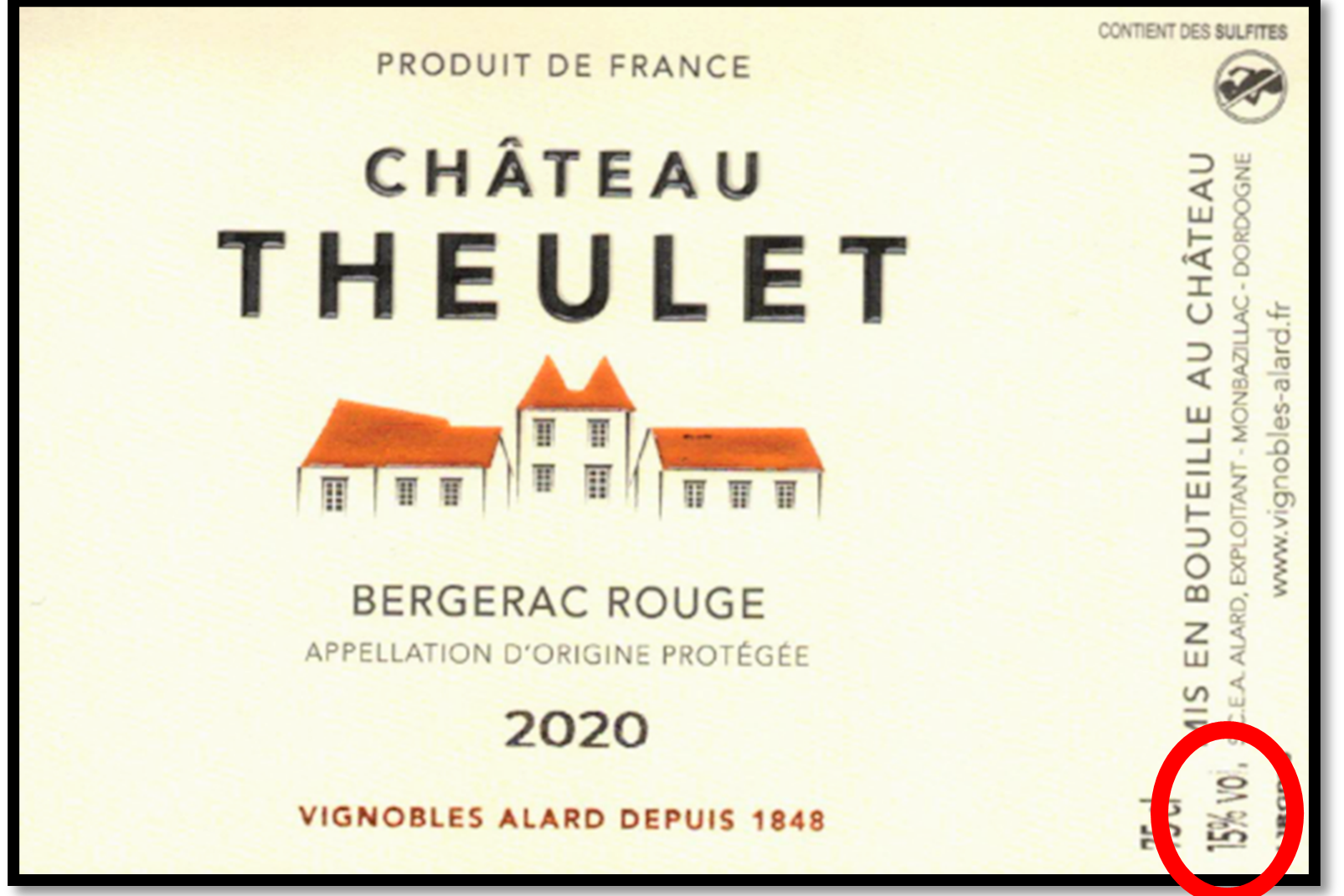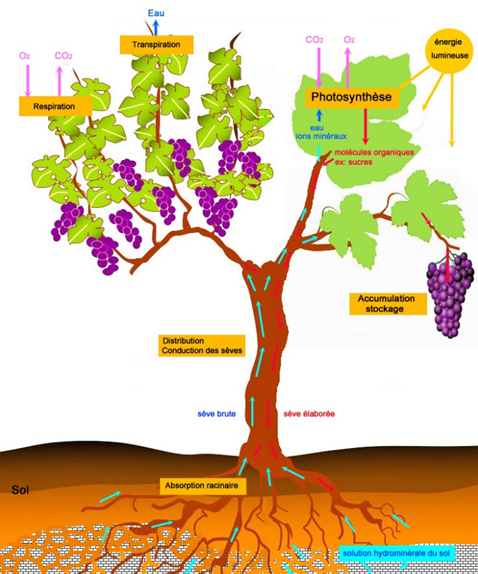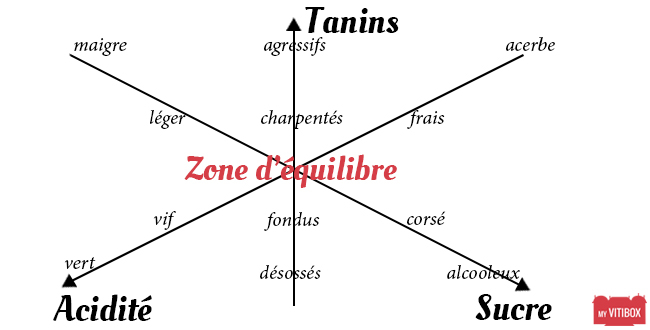Understanding the alcohol degree on a bottle of wine
We often meet wine drinkers who ask why the alcoholic degree on the label seems to be going up: indeed, it is harder and harder to find a quality bottle of red wine where the alcohol content in between 12 and 13.5% like it used to be.
The alcoholic content is one of the legal requirements that MUST be shown on the label. There is a tolerance of 0.5 points between what is on the label and the real content in the bottle! The governing body of the appellation (ex: Bergerac, Monbazillac, Pécharmant…) sets the minimum and maximum limits to respect when making the wine.

There are multiple ways to explain this rise in the alcohol content, but to do so, we must go back to the basics:
• For us winemakers, the green light to start the harvest is generally the sugar content of the grape as well as its aromatic maturity. When we harvest, the grape is full of sugar and contains no alcohol whatsoever.
• During the alcoholic fermentation process, the yeast cells turn the sugar into alcohol. For instance, to make a dry wine, we leave the yeast to eat through all of the sugar that is present in the grape juice.
• The more sugar that is present in the grapes at harvest, the more alcohol there will be in the wine.
-> A quick reminder: Yeast is a micro-organism which is naturally present on grape skins. To activate the yeast cells and start the fermentation process, the cells require heat (more than 5 degrees Celsius), as little oxygen as possible, and food (in this case, sugar).
So, the more sugar present, the more alcohol there is in the bottle … but why is there more sugar than before?
- First of all, winemakers nowadays are interested in making quality wines with more flavours, more complexity and structure: in order to meet thiscriteria, the grapes must have reached optimal maturity before harvest.
o Harvesting under-ripe grapes can give green or vegetal aromas to the wine and less flavour in general.
o We can harvest a slightly under-ripe white-grape variety to maintain a certain level of acidity.
- Waiting for the best moment before harvesting the fruit increases the amount of sugar in the grapes but also allows the fruit to have reached its best possible aromatic potential.
What does it take for a grape to concentrate in sugar?
- Sunshine, lots of sunshine! The sun is what will encourage the plant to grow and will help it fill up with sugar thanks to the photosynthetic process.
- Vines are trellised to keep the leaves above the grapes. The trellis system is used to have the most leaves possible available to capture the sunlight and turn it into sugar in the grapes.

- For the photosynthetic process to work, the leaves must be fully exposed to the sunlight AND there must be enough water stocked in the soil. It is mostly forbidden to water AOC vines in France (we will come back to this point in another article) so rainfall during the winter and spring is very important in our trade. A drought is catastrophic for the quality of the wine.
- Above 30 degrees Celsius, the photosynthetic process stalls and the vines go into ‘survival’ mode: the grapes stop developing.
- The temperature for optimum photosynthesis is around 25 degrees Celsius.
Therefore, it is the access to sunlight and the availability of water that impact the amount of sugar in the grapes, and consequently, the amount of alcohol in the wine.
Given the increase in temperatures and the decrease in rainfall that we are currently subjected to because of global warming, it is normal to see an increase in the alcohol content on wine labels.
To finish this chapter on the high alcohol content in wine, we can add that a high alcohol degree does not mean that the wine will taste of alcohol : current wine-making takes these changing factors into account – wine is more structured, complex and B A L A N C E D in aromas, alcohol, acidity and tannin. If the wine is well made, you should not be able to taste alcohol in your glass.

If you tend to look at the label to check the alcohol content before buying a bottle of wine, perhaps try doing a blind tasting : try to look further than the label and concentrate on the flavours, aromas and textures. Maybe, just maybe, you will find a new way of enjoying a glass of well-made wine, despite the information on the label!
Bonne dégustation …
Pictures : Les Vignobles Alard, Le Figaro Vin, Association Vendéenne


